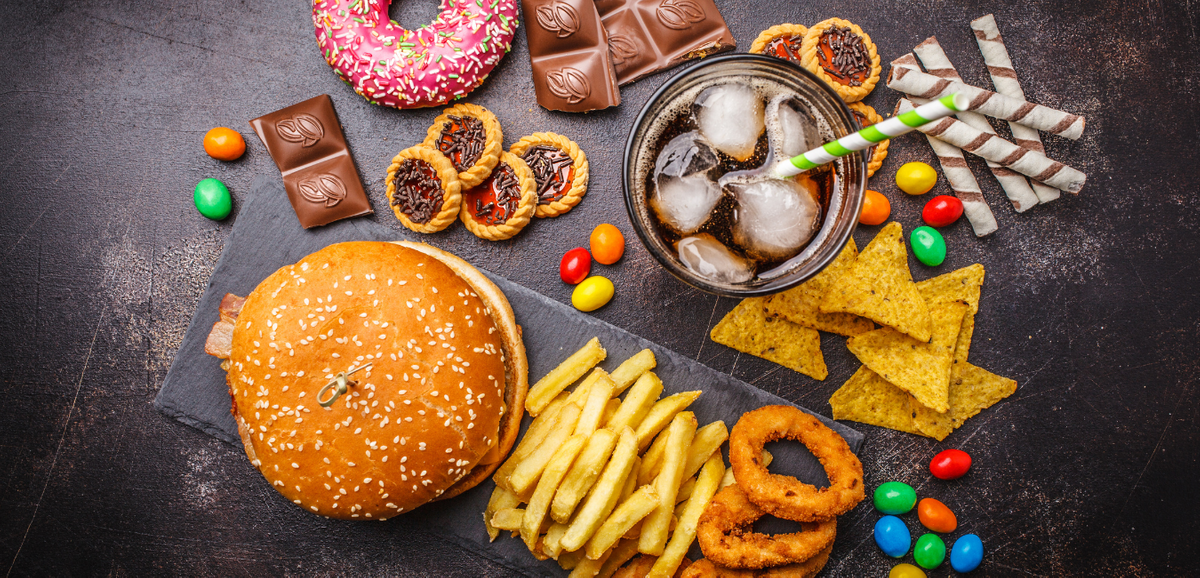Step 1: Understanding Processed Foods
• Educate Yourself: Learn about what constitutes processed foods – these are items that are packaged and altered from their original form, often with added sugars, preservatives, and artificial ingredients.
• Recognize Labels: Familiarize yourself with common ingredients in processed foods to identify them easily.
Step 2: Assess Current Diet
• Food Diary: Keep a record of your current eating habits for a week. Note down everything you eat and drink, focusing on identifying processed foods in your diet.
• Identify Processed Foods: Use your diary to pinpoint which processed foods you consume most frequently.
Step 3: Plan Your Meals
• Whole Foods-Based Meal Planning: Shift your meal planning to focus on whole, unprocessed foods like fruits, vegetables, lean meats, whole grains, and legumes.
• Prepare Shopping Lists: Create grocery lists that emphasize these whole food ingredients and avoid processed food aisles in the store.
Step 4: Gradual Reduction
• Slowly Phase Out Processed Foods: Gradually remove processed foods from your diet. For example, replace one processed meal a day with a whole food alternative.
• Find Whole Food Alternatives: Look for natural alternatives to your favorite processed foods. For example, replace sugary breakfast cereals with oatmeal topped with fresh fruit and nuts.
Step 5: Kitchen Makeover
• Clear Out Processed Items: Remove highly processed foods from your pantry, fridge, and freezer.
• Restock with Whole Foods: Fill your kitchen with whole food options, making these the most accessible choices.
Step 6: Cooking and Preparation
• Learn to Cook from Scratch: Embrace cooking meals from scratch using whole ingredients.
• Batch Cooking: Prepare meals in larger quantities to have healthy options readily available, reducing the temptation for processed food.
Step 7: Read Labels Diligently
• Ingredient Awareness: When purchasing packaged foods, read labels carefully. Look for products with minimal and recognizable ingredients.
• Avoid Certain Additives: Steer clear of items with high-fructose corn syrup, MSG, artificial flavors, and preservatives.
Step 8: Snack Wisely
• Healthy Snacking: Replace processed snacks with whole food options like fruits, nuts, or homemade trail mix.
• Prepare Snacks in Advance: Have healthy snacks prepared and accessible to avoid reaching for processed options when you're hungry.
Step 9: Dining Out
• Restaurant Choices: Choose restaurants that use fresh, whole ingredients and avoid fast food chains.
• Menu Selection: Opt for dishes that are less likely to contain processed ingredients, such as grilled proteins and fresh salads.
Step 10: Manage Cravings
• Understand Cravings: Recognize if your cravings are habitual or due to a lack of nutrients in
your diet.
• Healthy Substitutes: Find healthy alternatives that satisfy your cravings. For instance, if you crave something sweet, opt for a piece of fruit or a small portion of dark chocolate.
Step 11: Stay Informed and Motivated
• Continuous Learning: Keep yourself informed about the benefits of a whole foods diet and the risks associated with processed foods.
• Community Support: Join online forums or local groups for support, recipe sharing, and motivation.
Step 12: Adjusting and Adapting
• Listen to Your Body: Pay attention to how changes in your diet affect your energy levels, mood, and overall health.
• Flexible Approach: Be flexible and allow yourself occasional indulgences. A strict or punitive mindset can be counterproductive.
Step 13: Stay Hydrated
• Hydration: Drink plenty of water throughout the day. Sometimes thirst can be mistaken for hunger or cravings for processed foods.
Step 14: Incorporate Variety
• Diverse Diet: Ensure your diet includes a variety of foods to provide a range of nutrients and keep meals interesting.
• Seasonal Eating: Take advantage of seasonal fruits and vegetables for freshness and variety.
Step 15: Be Patient and Persistent
• Patience: Understand that changing eating habits is a process that takes time.
• Consistency: Stay consistent with your efforts, even if progress seems slow.
Conclusion
Eliminating processed foods from your diet is a significant step towards better health and wellness. By gradually making changes, learning to enjoy cooking and savoring whole foods, and understanding the importance of what you put into your body, you can successfully transition to a healthier, unprocessed diet. Remember, it's about progress, not perfection.
*This content has been generated with the assistance of ChatGPT, an AI language model. While every effort has been made to ensure originality and accuracy, the content may inadvertently include or resemble information from other sources. This is not intentional and we encourage users to conduct their own verification if specific details are critical for their purposes. The use of this AI-generated content is for informational purposes only and should not be considered as a substitute for professional advice.

